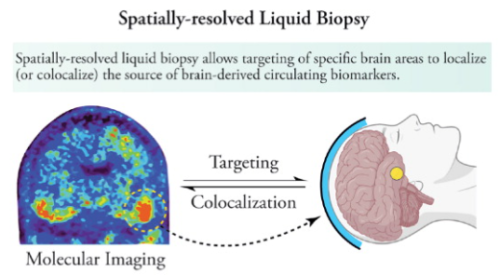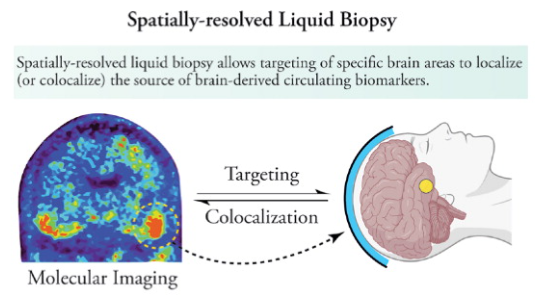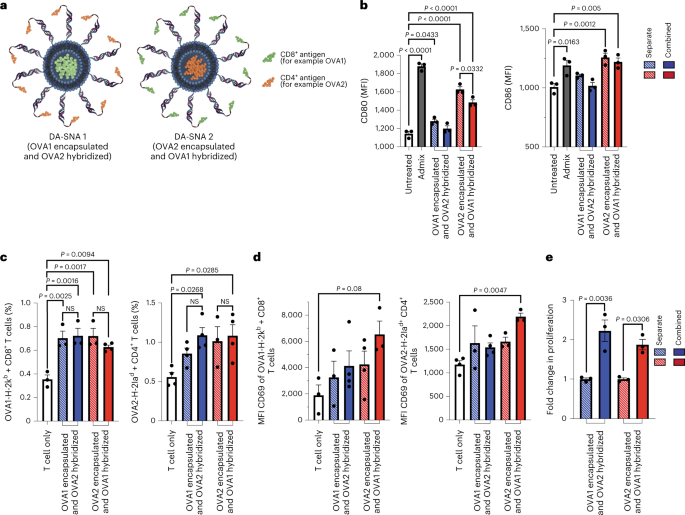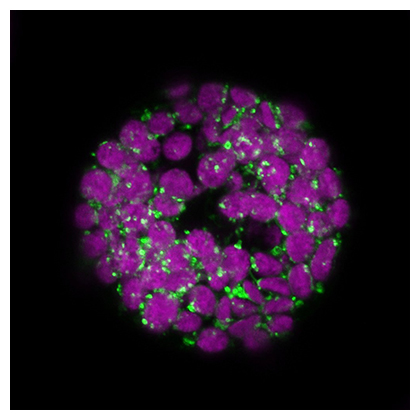アルツハイマー病の診断が容易になる可能性のある研究 Research could facilitate diagnosis of Alzheimer’s disease
2023-01-31 ワシントン大学セントルイス校
◆ワシントン大学セントルイス校では、マッケルビー工学部生体医工学科および医学部放射線腫瘍学科のHong Chen准教授とその共同研究者による新しい研究により、マウスモデルで集束超音波を用いた液体生検を行うと、介入しない場合に比べて多くのタウタンパク質と別のバイオマーカーが血液中に放出されることが判明しました。研究者らは、この非侵襲的な方法によって神経変性疾患の診断が容易になる可能性があるとしている。
◆ソノビオプシーと呼ばれるこの方法は、集束超音波を使用して脳の正確な位置を特定する。このマイクロバブルは、超音波のターゲットとなる組織まで移動して脈動し、血液脳関門を安全に開くことができる。この一時的な開通により、神経変性疾患の指標となるタウタンパク質やニューロフィラメント軽鎖タンパク質(NfL)などのバイオマーカーが血液脳関門を通過し、血液中に放出されるようになるのだ。
◆集束超音波を用いたリキッドバイオプシーにより、神経変性疾患の非侵襲的かつ標的診断とモニタリングへの道を開いた初めての研究結果は、1月31日発行の『Radiology』に掲載されます。
◆今回の研究では、まず、脳に異常なタウタンパク質が存在する若いマウス(タウ障害)の血液サンプルを採取し、ソノバイオプシーまたは偽治療を行った。その結果、ソノバイオプシーを行わない対照マウス群と比較して、リン酸化pTau-181タウタンパク質レベルが1.7倍、pTau-231が1.4倍増加することが判明した。続いて、タウオパチーモデルの神経変性初期段階において、海馬または大脳皮質のいずれかにターゲットを絞ってソノバイオプシーを行い、ソノバイオプシーの前後に採血を行った。このターゲットソノバイオプシーにより、神経変性疾患の二次バイオマーカーであるNfLタンパク質が、対照群に比べ治療マウスで2.3倍増加しました。
◆今後、研究チームは、血漿バイオマーカーに対するソノバイオプシーの定性的効果を調べ、集束超音波パラメータの効果を特徴づけ、最適な血液採取時間を決定するとともに、より大きな脳由来タンパク質バイオマーカーの放出にソノバイオプシーがどのように適用できるかを決定していく予定です。
<関連情報>
- https://source.wustl.edu/2023/01/focused-ultrasound-technique-leads-to-release-of-neurodegenerative-disorders-biomarkers/
- https://pubs.rsna.org/doi/10.1148/radiol.220869
タウオパチーマウスモデルにおける集束超音波を用いたリキッドバイオプシー Focused Ultrasound–mediated Liquid Biopsy in a Tauopathy Mouse Model
Christopher Pham Pacia, Jinyun Yuan, Yimei Yue, Eric C. Leuthardt, Tammie L. S. Benzinger, Arash Nazeri*, Hong Chen
Radiology Published:Jan 31 2023
DOI:https://doi.org/10.1148/radiol.220869

Abstract
Focused ultrasound–mediated blood-based liquid biopsy (sonobiopsy) improves detection of biomarkers of neurodegeneration from spatially targeted brain regions into the blood circulation compared with liquid biopsy without focused ultrasound.
Background
Neurodegenerative disorders (such as Alzheimer disease) characterized by the deposition of various pathogenic forms of tau protein in the brain are collectively referred to as tauopathies. Identification of the molecular drivers and pathways of neurodegeneration is critical to individualized targeted treatment of these disorders. However, despite important advances in fluid biomarker detection, characterization of these molecular subtypes is limited by the blood-brain barrier.
Purpose
To evaluate the feasibility and safety of focused ultrasound–mediated liquid biopsy (sonobiopsy) in the detection of brain-derived protein biomarkers in a transgenic mouse model of tauopathy (PS19 mice).
Materials and Methods
Sonobiopsy was performed by sonicating the cerebral hemisphere in 2-month-old PS19 and wild-type mice, followed by measurement of plasma phosphorylated tau (p-tau) species (30 minutes after sonication in the sonobiopsy group). Next, spatially targeted sonobiopsy was performed by sonicating either the cerebral cortex or the hippocampus in 6-month-old PS19 mice. To detect changes in plasma neurofilament light chain (a biomarker of neurodegeneration) levels, blood samples were collected before and after sonication (15 and 45–60 minutes after sonication). Histologic staining was performed to evaluate tissue damage after sonobiopsy. The Shapiro-Wilk test, unpaired and paired t tests, and the Mann-Whitney U test were used.
Results
In the 2-month-old mice, sonobiopsy significantly increased the normalized levels of plasma p-tau species compared with the conventional blood-based liquid biopsy (p-tau-181–to–mouse tau [m-tau] ratio: 1.7-fold increase, P = .006; p-tau-231–to–m-tau ratio: 1.4-fold increase, P = .048). In the 6-month-old PS19 mice, spatially targeted sonobiopsy resulted in a 2.3-fold increase in plasma neurofilament light chain after sonication of the hippocampus and cerebral cortex (P < .001). After optimization of the sonobiopsy parameters, no excess microhemorrhage was observed in the treated cerebral hemisphere compared with the contralateral side.
Conclusion
This study showed the feasibility of sonobiopsy to release phosphorylated tau species and neurofilament light chain to the blood circulation, potentially facilitating diagnosis of neurodegenerative disorders.



